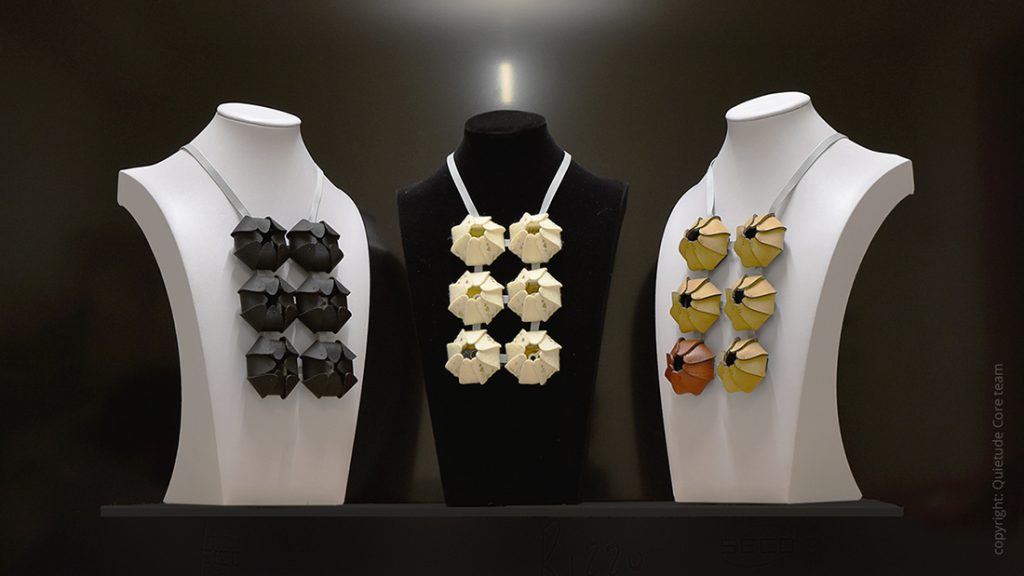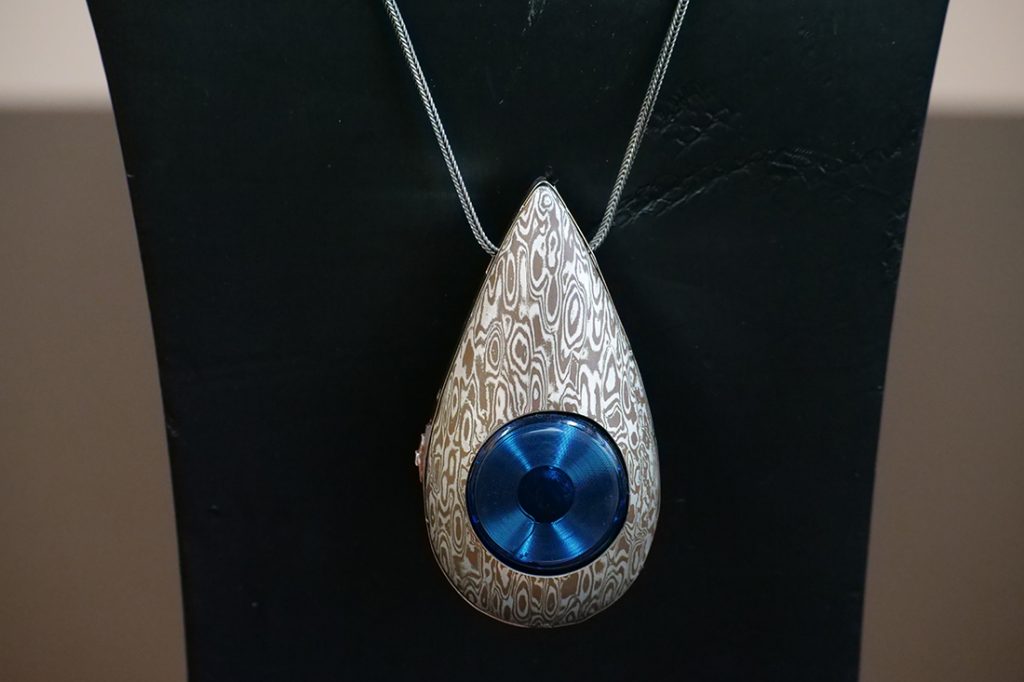Smart Jewellery is a major emerging trend, as consumers continue to embrace digital connectivity while maintaining a fashion forward stance. Analysts believe this to be the next evolutionary step in the jewellery sector. Isabella Yan reports on the market propellants, challenges and business opportunities.
Smart jewellery is a subcategory of wearable devices that refers to an assortment of rings, bracelets, necklaces and earrings. The category aims to improve health, communications and productivity in our lives. The idea of compacting the functionality of a smart phone on our wrist began with the advent of the smart watch and fitness trackers.
Previous wearables have been overly masculine, bulky and mainly appealed to utilitarian techies and fitness fanatics. Today, luxury jewellers from Graff, Chow Tai Fook to independent designers Margot McKinney and Bia Tambelli have collaborated with tech companies refining the wearable technology trend and rendering multipurpose jewels.
Function and Beauty
Maia Adams, Co-founder of jewellery market intelligence consultancy Adorn, indicated a broader trend of “functional jewellery” that is piquing consumer interest and giving birth to a new lexicon of jewellery. “We are seeing a greater trend for jewellery that performs a function. The Louis Vuitton menswear collection had models wearing pen pendants, and there’s a raft of jewellery brands adding Covid mask chains to their repertoire which can also hold sunglasses or be worn as a necklace or bracelet.”
According to Adams, the technology’s ability to add value and enhance the wearer’s life is fundamental and the jewellery needs to be considered as any piece of jewellery would – which means looking at wearability, comfort, beauty and durability. “If you are wearing something 24/7 because of the tech it holds, is this a piece of jewellery you are happy to wear all the time? Will it stand up to constant wear?” she added.
The jewellery is the carrier or shell in which the tech is housed and becomes an ‘accessory’ to the digital device. Paola De Luca, Founder, The Futurist Ltd., highlighted that smart jewellery needs to be ergonomic.
Smart jewellery with the most business potential could be the ones that fulfil a specific function. Henry Ho, President of the Jewelry Trade Center (JTC) in Bangkok, noted, “Its value is determined by how important and useful the functions are. Form, function and costs are factors that will determine its popularity and sales.”
For Adams, tech solutions that anticipate a problem through constant monitoring and alert the wearer to take the necessary steps, have the potential to add a lot of value.
Adams revealed several innovative brands such as Quietude by Patrizia Marti, featuring a range of smart jewellery aimed to help deaf people perceive sound. Australia’s Leah Heiss has also created modernist jewellery that can administer insulin to diabetics and a necklace that doubles as a heart monitor.
Other companies like Talsam, explore the emotional connectivity in long distance relationships with gem-studded necklaces and bracelets powered by a private messaging app.
Omar Farha, Founder of Talsam, believes that “jewellery must solve a clear need and offer meaningful value, otherwise people may view it as nothing more than a novelty item.”
Innovative applications that continue to blur the line between jewellery and technology, include an NFC-embedded pearl made by Galatea Momento Pearls, which allows you to record a voice message that can be replayed with your phone. This idea has also been adopted by Taiwanese hardware company, Acer, producing smart prayer beads to help practising Buddhists keep score of their mantra rotations.
Millennials & Tech Savvy
With the acceleration of digitalization, new lifestyles and the current economic crisis, consumers are continuously seeking new forms of luxury that are gender fluid, versatile and meaningful at the same time. As an emerging category, smart jewellery has attracted much attention from millennials.
Farha of Talsam also observed an increase in fashion-oriented jewellery geared towards women. “There are also products that are neutral and also cater to men. Users typically are technology savvy, already wear jewellery, and are open to trying new products.”
Recent Events
The Gem & Jewellery Institute of Thailand (GIT) and the Creative Industry College (CCI) Srinakharinwirot University recently hosted the ECI Conference event on Smart Jewellery in Bangkok in November 2020. The event demonstrated a number of smart jewellery concepts that aimed to encourage entrepreneurs to increase their potential with smart jewellery technology.
Sumed Prasongpongchai, new Director General of GIT, commented, “We want to bring awareness to the changing market caused by Covid-19 and the recent hazardous PM2.5 air pollution in Thailand, so that businesses are able to adapt and cope with the new paradigm.”
The Smart Jewelry conference project included a series of prototype jewellery collections and decorative items designed to improve health and wellness of its wearers. “We believe this is the emerging trend that will soon become mainstream for jewellery businesses.”

Opportunities & Challenges
Wearable tech jewellery is representing an opportunity for jewellers to diversify their portfolio and introduce new revenue streams. Prasongpongchai noted that wearable technology can provide an “augmented” experience to the wearers that go “beyond traditional values like beauty, adornment and social status in jewellery.” Adams also added “with health and wellbeing apps,as well as connectivity, so much a part of our lives now, it makes sense that we find new and attractive ways to incorporate them into our personal style.”
We are already seeing accessories that tune into people’s moods and states of mind. “For instance, sunglasses with coloured lenses to influence the wearer’s mood, mindset or emotional responses.” She further highlights the potential for incorporating new tech into jewellery.
As with any emerging new category, the main challenge is educating consumers and also identifying useful cases for smart jewellery that provide customers with meaningful value. Farha mentioned, “Designing a beautiful product that is easy-to-use and affordable is the key to gaining adoption.” He expects smart jewellery to stand the test of time and become a more prominent product category in the future.
Adam Komarniki, General Manager of KS Jewelry, a Bangkok-based manufacturer, also sees great business opportunities for jewellers using semi-precious materials and metals. The challenge with smart jewellery is to ensure it’s still timeless. “Modern technology is ever evolving and requires constant updating. There’s a risk that a piece’s function may become outdated. This may also mean having to melt down the piece to make something new again,” he said.
De Luca also echoed that practical elements like the lifespan of the technology must be considered. “Digital technology changes rapidly in a few months, so the jewel must be changeable and replaceable with the tech. Certain synthetic materials like resin or plastic are more suitable than precious metal as it’s not easy to implement digital devices inside metal.”
She believes a new category of products called “bejewelled tech” needs to be born which is different to smart jewellery. She argued that the primary purpose of jewellery as adornment is no longer at the core of smart jewellery, which raises the broader debate of whether these pieces should be classified as jewellery. “I wouldn’t call it smart jewellery. We are seeing technology becoming bejewelled. It’s not about making jewellery “smart,” because jewellery is already “smart” as it can send emotional vibration without technology. The moment you add technology to its core, it changes the nature of jewellery itself.”
De Luca believes the only way to really succeed in this category is to create collaborations between major tech companies and jewellery houses. “They must co-create, merging their technical knowledge and craftsmanship. Tech companies also need to know what’s going on in the bejewelled precious world and combine their distribution channels.”
Companies that have successfully collaborated with specialists in a variety of disciplines include Quietude, a line of smart jewellery for deaf people designed by Patrizia Marti. Marti sees great potential in the future of smart jewellery in the healthcare segment in terms of improving design aesthetics and will “integrate new technologies based on AI and machine learning in future products.”
GIT also recently developed bejewelled air purifiers and face masks, working alongside PM2.5 technology researchers, jewellery designers and brands. The jewellery pieces were developed to meet consumer requirements and changing lifestyles to serve the purpose of everyday wear.
The intersection of technology and our human bodies has shown innovative ways for jewellers to inject new functionalities to their jewellery collections. Although this category may present some clear challenges, it looks to grow further as modern consumers continue to seek beauty and functionality in the digital age.



